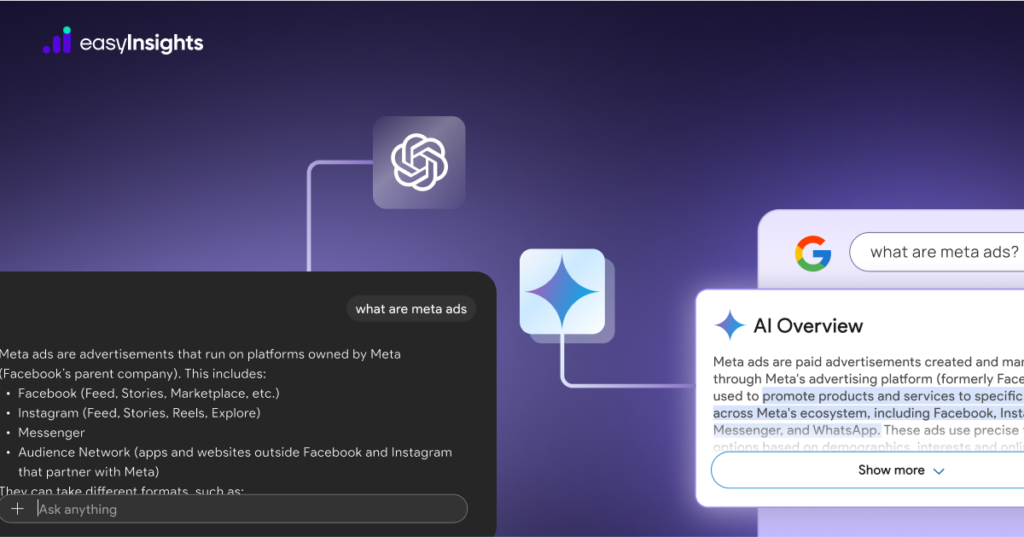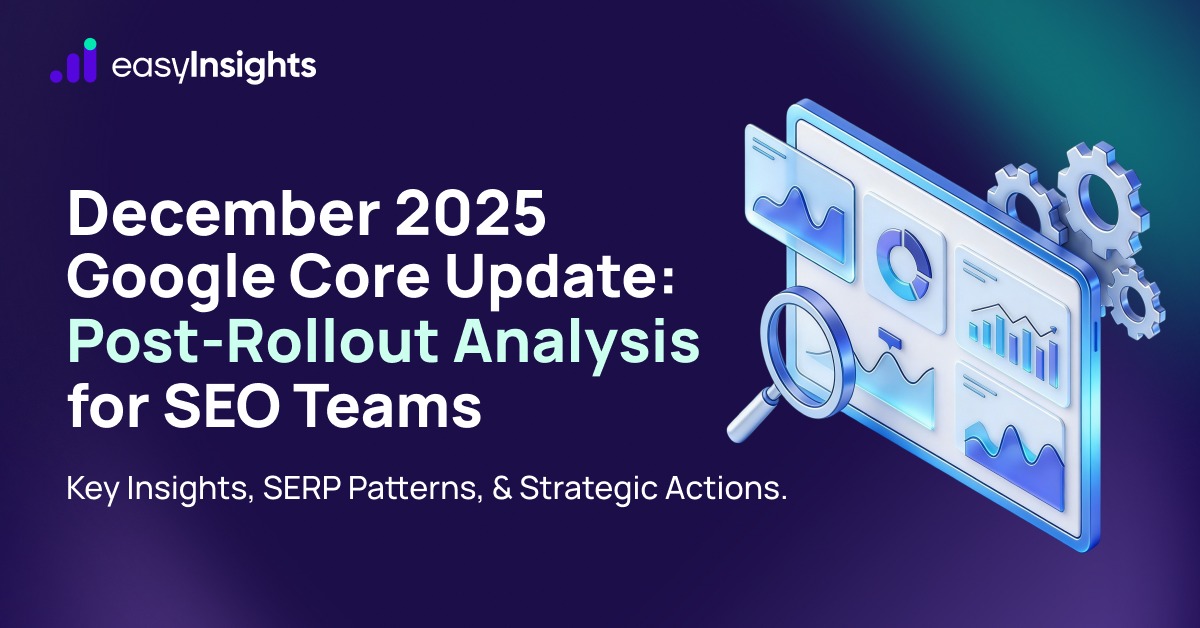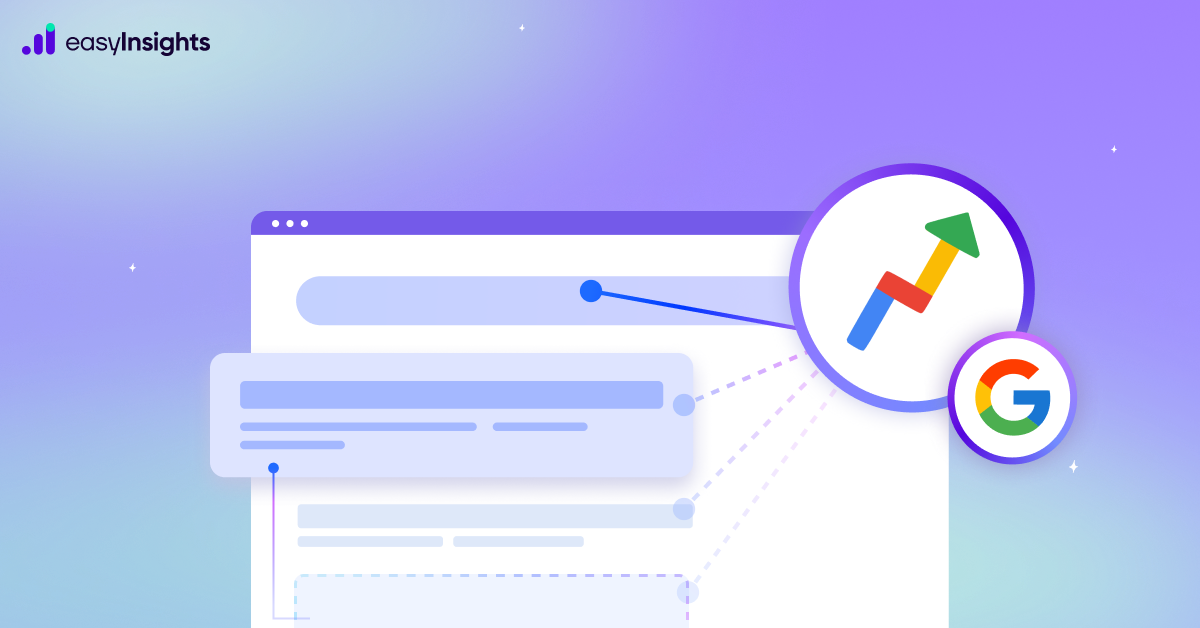
Ever get that déjà vu feeling when you type a question into ChatGPT, Perplexity, or Google, and the answer feels like it was written just for you? That’s no coincidence, it’s the power of Generative Engine Optimization (GEO) at work. Just like how brands once raced to be #1 on Google, today they’re battling to be part of the answers AI tools generate instantly.
In this blog, we’ll break down what GEO really means, how it’s transforming the future of digital marketing, and most importantly, the key strategies you can use to optimize your content for AI-driven search engines. Whether you’re a marketer, brands owner, or content creator, this guide will help you stay ahead in the evolving world of search.
Jump ahead to:
What is GEO?
GEO stands for Generative Engine Optimisation, a new way to make sure your content shows up in AI-powered search engines like ChatGPT, Google AI Overviews, Perplexity, Gemini, and Copilot.
Unlike traditional SEO, where you optimize for search engines like Google or Bing, GEO focuses on getting your content featured in the answers that AI tools generate when people ask questions. Think of it as helping your brand show up in conversations people have with AI. As more users turn to AI for quick, helpful answers, GEO helps your brand stay visible in this new search world. It’s not just about ranking on a search page, it’s about being part of the answer.
By optimizing for GEO, you’re helping potential customers find your brand faster, understand your offerings better, and trust your expertise all before they even land on your website.
In short, GEO helps you attract the right audience, build trust through AI responses, and grow loyal followers who come back for more.
Also Read: Conversion Rate Optimisation (CRO) Strategies 2025
GEO vs. SEO: What’s the Difference and How Are They Alike?
Both Generative Engine Optimization (GEO) and Search Engine Optimization (SEO) play a big role in making your brand visible online.
| Aspect | GEO (Generative Engine Optimization) | SEO (Search Engine Optimization) |
| Primary Focus | Optimizing content for AI-powered platforms (like ChatGPT, Bing AI) | Optimizing content for traditional search engines (like Google, Bing) |
| Goal | To get featured in AI-generated answers, summaries, and overviews | To rank higher in organic search results (SERPs) |
| Content Style | Conversational, natural language, structured for AI understanding | Keyword-rich, optimized for crawler indexing and ranking algorithms |
| Keyword Strategy | Focus on long-tail, question-based, and semantic keywords | Focus on exact-match and high-volume search keywords |
| Answer Format Preference | Direct, concise answers in paragraphs, bullets, or tables | Full web pages optimized for click-throughs and time-on-site |
| Ranking Signals | Relevance, credibility, freshness, and entity recognition by AI | Backlinks, page speed, mobile-friendliness, on-page SEO elements |
| Distribution Strategy | Includes Reddit, Quora, forums, social signals where AI gathers data | Focuses on website optimization, backlinking, and search visibility |
| Search Engine Used | Generative AI engines like ChatGPT, Gemini, Perplexity, Bing AI | Traditional search engines like Google Search and Bing |
| Content Types Prioritized | FAQs, summaries, concise explanations, and user-generated content | Blogs, long-form articles, landing pages, product pages |
| Measurement Metrics | Featured in AI responses, citations, and engagement on AI tools | Rankings, organic traffic, bounce rate, CTR, backlinks |
| Technical Optimization | Aligning content with AI training data formats and schema | Focus on HTML tags, sitemap, crawlability, and site speed |
How Are GEO and SEO Similar?
Despite their differences, GEO and SEO share many of the same goals and best practices in digital marketing:
- Boosting visibility: Both GEO and SEO are designed to get your content in front of the right people. Whether it’s a Google search or an AI-generated answer, the goal is to show up when it matters.
- Smart keyword usage: Both rely on strategic keyword optimization to match your content with what users are searching for, whether typed into a search bar or asked in a chatbot.
- Improved user experience: Whether you’re optimizing for AI tools or search engines, the user experience must be smooth, helpful, and easy to navigate.
- High-quality, helpful content: SEO and GEO both reward content that’s relevant, well-written, and trustworthy, aligning with principles like E-E-A-T (Experience, Expertise, Authoritativeness, Trust).
- Data-driven strategies: From Google Analytics to AI usage insights, both SEO and GEO use analytics tools to track what works, what doesn’t, and how to improve.
- Technical performance: Page speed, mobile responsiveness, and clean site structure matter for both. Good technical SEO also benefits GEO by making your content more readable for AI systems.
- Building authority: Creating authoritative content, earning backlinks, and establishing brand credibility are key for both GEO and SEO success.
- Constant evolution: SEO isn’t static, and neither is GEO. As algorithms and AI models evolve, your content must adapt to keep performing well.
Also read: How Agentic AI is Transforming Digital Marketing
Integrating GEO with SEO
While Generative Engine Optimization (GEO) is emerging as a new pillar in the digital marketing world, it doesn’t work in isolation. In fact, combining GEO with traditional Search Engine Optimization (SEO) is the most effective way to increase visibility across both AI-powered platforms and classic search engines.
There’s a strong connection between the two. GEO and SEO share many common goals, like improving content quality, targeting the right audience, and enhancing user experience. SEO forms the foundation, and GEO builds on top of it, helping your content appear not just in Google search results, but also in AI-generated answers from tools like ChatGPT, Perplexity, Copilot, and Google’s AI Overviews. When you align these two strategies, you create a digital marketing approach that covers all the bases from search rankings to AI responses.
Why Merging GEO with SEO Matters More Than Ever
As AI-powered search tools gain popularity, people are starting to ask questions to chatbots instead of typing keywords into Google. If your content isn’t optimized for AI search responses, you’re missing a growing share of online traffic.
Traditional SEO helps your website rank, while GEO ensures your content becomes part of direct, AI-generated answers. Together, they help your brand:
- Show up everywhere users are searching
- Build trust with highly relevant, accurate information
- Deliver personalized experiences at scale
Why Generative Engine Optimization (GEO) Is Critical in Today’s Digital Marketing
With the rise of AI-powered search, Generative Engine Optimization (GEO) is becoming a game-changer in digital marketing. As AI-driven platforms like ChatGPT, Bing AI, and Perplexity grow rapidly, brands need to adapt their strategies to stay visible and relevant in this shifting landscape.
The initial hype around AI in search has settled, and now the technology is maturing while gaining widespread public trust. Google, once the uncontested leader in search, now faces strong competition from innovative AI platforms that are reshaping how users discover information online.
Key Benefits of GEO in Your Digital Marketing Strategy
Here’s why adopting Generative Engine Optimization is essential for brands looking to thrive in an AI-first search world:
- Broader Reach Across Platforms: GEO helps your content appear not just on Google or Bing but on emerging AI-powered search tools, capturing a wider and more diverse audience.
- Improved User Experience: By optimizing for AI, your content becomes more accessible and personalized, enabling AI platforms to deliver quick, relevant answers that boost user satisfaction and brand loyalty.
- Competitive Edge: Brands that adopt GEO early position themselves as innovators and leaders in digital marketing, standing out in the crowded AI-driven search space.
- Enhanced Brand Authority: AI platforms synthesise information from multiple sources. Having well-optimised content included enhances your brand credibility and authority, especially when you focus on clear entities like people, places, and products.
- Actionable Data Insights: GEO provides detailed metrics on how users interact with your content across AI platforms. These insights allow you to refine your approach continuously and improve content relevance and engagement.
- Future-Proof SEO Strategy: As AI search evolves, integrating GEO ensures your digital marketing efforts remain effective, helping your brand stay ahead and maintain a strong online presence.
Additional Reading: What is the SRSLTID Parameter & How it Affects SEO
How Does Generative Engine Optimization Work?
Generative Engine Optimization, or GEO, is a smart way to make your online content shine on AI-powered search platforms like ChatGPT, Bing AI, and other generative AI tools. The goal of GEO is to make sure your content is clear, useful, and easy for AI to find and understand, so it gets shown more often and ranks higher in AI-driven search results. Here’s a simple breakdown of how GEO works and what you need to focus on:
1. Researching AI Search Behavior
Before optimizing, you need to understand how AI platforms find and rank content. This means researching on:
- Keywords and phrases people use when asking questions on AI tools, especially natural, conversational language and long-tail keywords.
- How AI prefers to organise answers like paragraphs, bullet points, or videos.
- What your competitors are doing to get featured by AI engines.
- How AI currently “sees” your brand and content online.
- What type of content (articles, videos, FAQs) does AI tend to show first.
By learning these details, you can adjust your content to fit what AI likes best and improve your chances of showing up in AI-generated answers.
2. Creating High-Quality, Relevant Content
AI search engines reward content that’s:
- Clear and on-topic: Directly answers what people are asking.
- Meaningful and complete: Offers detailed and thorough explanations or solutions.
- Aligned with user intent: Whether users want information, to buy something, or navigate somewhere, your content should match their needs.
- Fresh and updated: Newer, regularly updated content performs better.
- Trustworthy and authoritative: Citing reliable sources, showing expertise, and establishing your brand’s credibility boosts your content’s value.
- Entity-focused: AI understands specific people, places, or concepts (called “entities”), so mentioning and explaining these helps AI connect the dots.
Adding images, videos, or interactive elements can also make your content more engaging for both users and AI.
3. Structuring Content for Easy Understanding
How you organise your content matters a lot for AI:
- Start with a clear introduction that tells what the page or article is about.
- Use simple language and avoid confusing jargon.
- Break information into headings, bullet points, and lists so it’s easy to scan.
- Use structured data (like schema markup) to help AI better understand the content type, for example, marking up product info, reviews, or events.
- Put important answers right at the start, so AI can quickly pick them up.
Good structure helps AI quickly grasp your content’s key points and makes it more likely to be featured in AI-powered search results.
4. Sharing Content Where AI Can Find It
Content doesn’t just need to be good; it also needs to be easy for AI to discover:
- Share your content on popular platforms like blogs, forums (Reddit, Quora), and social media, where AI systems gather data.
- Encourage user-generated content like reviews and comments, which adds fresh, authentic material that AI values.
- Build a community around your brand on social media and discussion groups to keep content active and visible.
- Keep your social profiles updated since AI also considers social signals when ranking content.
The more places your content lives and the more active it is, the better chances AI has to pick it up and prioritise it.
5. Building Brand Trust and Authority
AI loves content from brands it trusts. To build this:
- Keep your brand message consistent across your website and all online platforms.
- Maintain a good reputation offline, as AI algorithms increasingly factor in overall brand reputation.
- Gain quality backlinks from respected websites to boost your site’s authority.
- Be honest and transparent about your content sources and avoid tricks or manipulative SEO tactics.
Building trust helps AI recognise your content as reliable, which improves ranking and user confidence.
6. Ensuring Your Website Is Technically Ready
Good technical SEO is still vital for GEO. Make sure your website:
- Uses proper HTML tags like titles, meta descriptions, and headings.
- It is fully mobile-friendly for smooth browsing on phones and tablets.
- Loads fast by optimizing images and site code.
- Has no errors blocking search engines from crawling or indexing your pages.
- It is secure, using HTTPS, which users and AI both prefer.
A technically strong website ensures AI can easily access and understand your content.
7. Experimenting and Improving Over Time
GEO isn’t a one-and-done job; it’s an ongoing process:
- Try different types of content, blogs, videos, infographics and see what AI and your audience respond to best.
- Regularly test new ideas and measure how they perform on AI platforms.
- Keep learning about updates in AI technology and search behavior.
- Adjust your strategy based on data and user feedback to stay ahead.
Staying flexible and curious will keep your GEO strategy effective as AI continues to evolve.
Conclusion
EasyInsights, we believe Generative Engine Optimization (GEO) is not just another marketing buzzword, it’s the future of how brands will get discovered, trusted, and remembered. Just like SEO transformed digital visibility in the past decade, GEO is reshaping how audiences connect with your content through AI-driven platforms.
The key to winning in this new landscape is data-driven precision. EasyInsights helps you unify, clean, and activate your marketing data so your GEO and SEO strategies aren’t built on guesswork, but on real insights. With accurate attribution, smarter audience segmentation, and actionable dashboards, you can create content that AI systems love, and that your customers find genuinely valuable.









